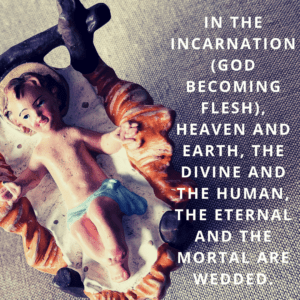The Wedding at Cana: A Second Epiphany
Dear Sisters and Brothers in Christ,

Have you ever wondered why Jesus’ first miracle, the first public display of his divine power, takes place at a wedding? Wedding imagery is quite prominent throughout the sacred scriptures. The Old Testament begins with wedding imagery in the Book of Genesis… “a man shall leave his father and mother and cleave to his wife and the two become one flesh” (Gen 2:24). Throughout the Old Testament, God’s relationship with the people of Israel is portrayed in nuptial language. Heaven itself is envisioned as a wedding banquet.
The New Testament too begins with wedding imagery. Mary and Joseph on the way to Bethlehem, Jesus’ first miracle takes place at a wedding and St. Paul tells us that marriage is a great mystery because it is meant to symbolize Christ’s love for his bride, the Church. At the end of the Bible, in the Book of Revelation, we hear of the wedding feast of the Lamb and we see the Church, portrayed as a bride bedecked with all her jewels, descending from heaven. From beginning to end, the Bible is full of wedding imagery. Marriage seems very important to God.

Last month we celebrated Christmas, the mystery of God coming in the flesh. For all the nostalgia that Christmas brings, rarely is it associated with marriage. Yet, in a sense, Christmas is all about marriage. In the Incarnation (God becoming flesh), heaven and earth, the divine and the human, the eternal and the mortal are wedded. Jesus humbles himself to share in our humanity so that we might come to share in his divinity. He pours himself out completely for his bride, the Church (that’s you and me). In Holy Communion, we become “one” with Jesus.
The miracle at the wedding at Cana is one more way that the true meaning and identity of Jesus is revealed. It is, in fact, another epiphany.
Sincerely yours in Christ Jesus, the Way, the Truth and the Life,

